Nano-particles in porous media
The growing use of nano-materials in the industry over the last decade led to an increased interest in the behavior of NPs in solutions and in the natural environment and the need for efficient tracking methods. In our lab, we investigate the reactive transport of metallic NPs in the soil using geo-electric methods. The implementation of these methods allows us to track the movement of NPs in the soil in a non-invasive fashion.
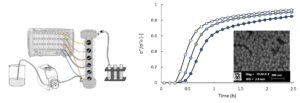
|
Soil Aquifer Treatment
In Israel, most of the wastewater is being reused after proper treatment. Part of that is done using a unique technology of Soil Aquifer Treatment (SAT). Our efforts in that field are related to better understanding the complex physical, biological and chemical processes that are involved, with the goal of enhancing the process. Specifically, we try to increase infiltration and increase water quality at the same time. To do that we combine laboratory and field work with mathematical modeling and geophysical measurements.
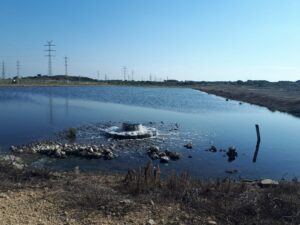
|
Study of root zone dynamics using electrical resistivity tomography
 Understanding the basic concepts of root water and nutrient uptake mechanisms is becoming increasingly more relevant; to better predict responses of sensitive ecosystems to global climatic change and to better manage agricultural resources under constraints of water limitations and environmental concerns. One of the limitations in studying root zone dynamics is the sensitivity of the processes to the measurement. We apply here non-invasive non-destructive electrical resistivity tomography (ERT) to study the root zone soil water dynamics at various scales, including high resolution study of a single root, and field scale mapping of wetting patterns under orchards. Understanding the basic concepts of root water and nutrient uptake mechanisms is becoming increasingly more relevant; to better predict responses of sensitive ecosystems to global climatic change and to better manage agricultural resources under constraints of water limitations and environmental concerns. One of the limitations in studying root zone dynamics is the sensitivity of the processes to the measurement. We apply here non-invasive non-destructive electrical resistivity tomography (ERT) to study the root zone soil water dynamics at various scales, including high resolution study of a single root, and field scale mapping of wetting patterns under orchards.

|
Spectral induced polarization signature of soils
 The ability to map soil contamination and its temporal dynamics is the key for soil and groundwater protection and remediation. In this study we attempt to identify the unique geo-electrical signature of various contaminant types, including non-aqueous phase liquids, organic and inorganic ionic and non-ionic materials, and more. We also use these techniques to study contaminant degradation processes. The ability to map soil contamination and its temporal dynamics is the key for soil and groundwater protection and remediation. In this study we attempt to identify the unique geo-electrical signature of various contaminant types, including non-aqueous phase liquids, organic and inorganic ionic and non-ionic materials, and more. We also use these techniques to study contaminant degradation processes.
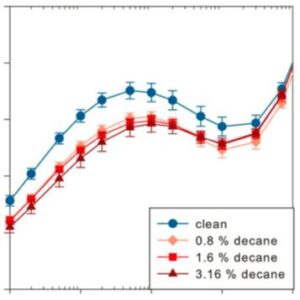
|
The effect of biological activity on unsaturated soil hydraulic properties
 Soil physics was traditionally considering physical processes related to water flow. However, in cases where high organic loads exist (such as contaminated sites), microbial activity activity can lead to the development of extensive biofilms. These in turn may significantly alter the soil hydraulic properties (conductivity, retention) and by that alter flow patterns and quantities. Targeting optimal soil remediation, in this study we combine laboratory experiments and numerical modeling to quantify the changes in soil hydraulic properties induced by microbial activity. Soil physics was traditionally considering physical processes related to water flow. However, in cases where high organic loads exist (such as contaminated sites), microbial activity activity can lead to the development of extensive biofilms. These in turn may significantly alter the soil hydraulic properties (conductivity, retention) and by that alter flow patterns and quantities. Targeting optimal soil remediation, in this study we combine laboratory experiments and numerical modeling to quantify the changes in soil hydraulic properties induced by microbial activity.
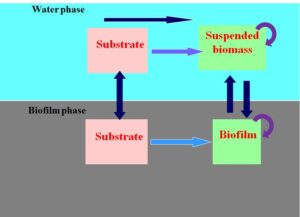
|
Snow hydrology in temperate regions
Snow in temperate climate has its own unique characteristics, mostly related to the daily fluctuation of temperature around the freezing point, and the relatively high mass and energy fluxes that exist throughout the snow accumulation period. In this experimental study we study the snow dynamics on Mt. Hermon as a case study for such conditions.
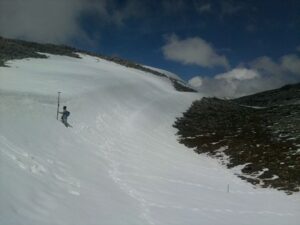

|